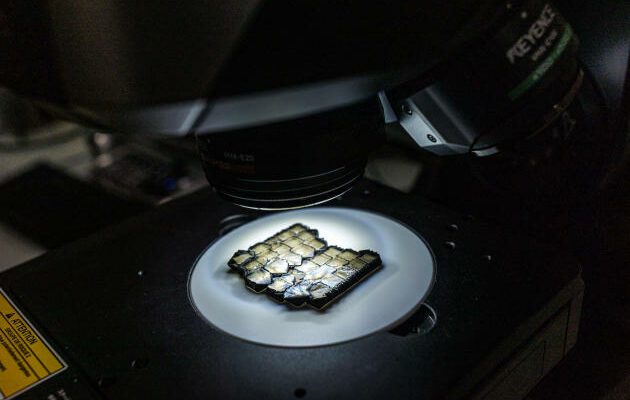Alix Gicquel struggles in front of his safe. “I think I got the combination wrong”, annoys this 68-year-old former researcher, specialist in plasma physics, founder of Diam Concept. Installed within Accelair, the gas business accelerator Air Liquide located on an ultra-secure site in Loges-en-Josas (Yvelines), his company has been manufacturing diamonds in the laboratory since 2016. ” Ah, there you go. I’ve found “rejoices this slender and energetic woman, pulling out three black cases.
The office is soulless, poorly heated and darkened by gray lino. The twinkling of the stones, which Mme Gicquel presents between his two knuckles to flatter them, will grant him poetry. “Look, this one is a champagne colored diamond. It is obtained by adding a little nitrogen”she explains, before sketching a sketch “to make people understand”.
Diam Concept reproduces the process of creating a natural diamond in the laboratory. The precious stone comes from carbon transformed, by pressure and temperature, in the Earth’s mantle more than 200 kilometers underground, into a specific crystalline structure. Through a long process, the molten lava flows carry the stone to the earth’s surface. Man extracts it from mines, or discovers it in rivers.
No difference to the naked eye
The company offers a formula that is less expensive, more respectful of the environment and people, but very complex. Carbon pellets, square like licorice Zan candies, are placed on a molybdenum wafer, a refractory metal, in the center of a plasma reactor to be subjected to low pressure and a temperature of 4,000 degrees. The injection of hydrogen and methane transforms these strains, creates electrons in them and “grow”explains the entrepreneur, by imposing a pair of dark glasses on us to observe these kinds of fungi appearing on the surface of the pastilles.
Using a laser, the material will be rid of its polycrystalline, to keep only the monocrystal. This rough diamond will then be measured, passed through a digital microscope and characterized by laser, before being sent for polishing to subcontractors, particularly in India. This technique – count between three weeks and two months to obtain a gem – makes it possible to create diamonds with physico-chemical properties identical to those of mine diamonds. With the naked eye, no difference is detectable.
“It’s state-of-the-art technology”summarizes Mme Gicquel. It was developed in the 1950s. The South African De Beers, one of the world’s leading producers of diamonds, has been making them since the 1960s. cutting and drilling. But this technique is now perfected to produce high quality diamonds suitable for jewelry. And she is experiencing a resurgence of interest.
You have 70.19% of this article left to read. The following is for subscribers only.
